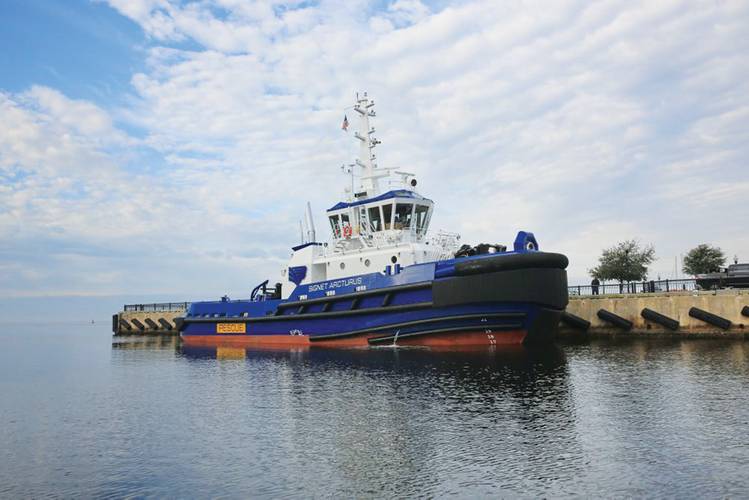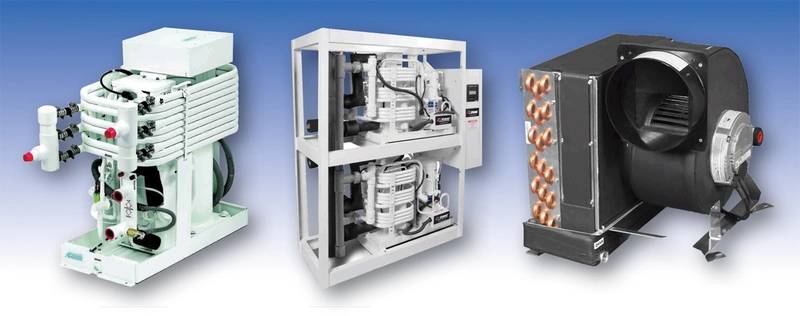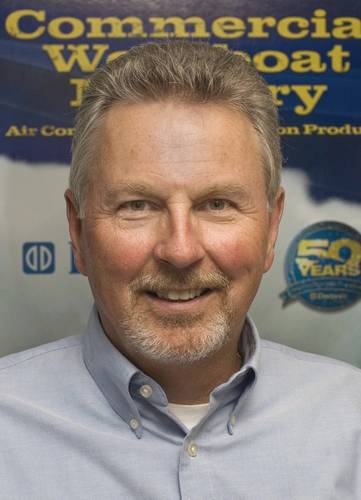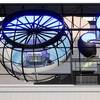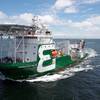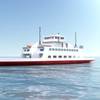Companies Collaborate to Find Cool Solutions
Dometic’s HVAC systems fit right into the dual purpose of providing comfortable workboat environments while also protecting vital equipment. Both tasks go hand in hand and collaboration between parties is the key.
An efficient and reliable HVAC (heating, ventilation and air conditioning) system on board commercial vessels is essential. In difficult and often extreme operating conditions, the system will provide a comfortable and healthy work environment for crew and also protect vital electronic equipment from overheating and potentially breaking down. Recently, Dometic Marine supplied chilled water air conditioning systems and engine room ventilation equipment for new Signet Maritime Corporation tugs – the Signet Arcturus (November 2013) and Signet Polaris (April 2014) – both built at Patti Marine Enterprises, Pensacola, FL. This equipment included a 20-ton chiller, with supporting air handlers, engine room ventilation, and mist eliminators
Dometic Marine, a division of the Dometic Group, is a global supplier of comfort systems and equipment for yachts and pleasure boats and a major supplier of HVAC, engine room ventilation, watermakers, and toilet systems to the commercial, workboat and military markets. This includes an extensive line of air conditioning systems to handle and suit a variety of vessels, from its high-capacity chilled water systems to its smaller self-contained systems.
Collaboration
Several different specialist companies first needed to come together, each with experience to be considered so as to ensure the best solution for each vessel. The owner, shipbuilder, naval architect, local integrator and the HVAC supplier were all involved in the exchange of ideas about the selection and installation of the most suitable HVAC equipment and its placement on the vessel to guarantee the most effective air distribution. In this case, they chose Dometic. Over time, Dometic Marine has distilled the collaborative strategy into a productive and efficient process.
Ed Todd, Director of National OEM Sales, Dometic Marine, told MarineNews, “Our strength is our ability and willingness to work with the various parties through every stage of the process, demonstrating Dometic’s personal touch and dedication from start to finish. We are prepared to adapt and customize our HVAC equipment to best suit our customer and each particular vessel.”
From the start of the build, to launch and beyond, Dometic insists that its personnel are always on hand to provide input. By visiting the yard on numerous occasions during the construction, the account manager is able to reconfigure equipment, make adjustments and react to questions. The relationship continues after the vessel is launched, with continual check-ups and requests for feedback on the performance of the equipment.
Todd adds, “Through close collaboration with our customers, we are able to develop HVAC and sanitation equipment to satisfy exact vessel specifications, which has led to the growth of our workboat customer base globally. The current contract with the Signet Maritime tugs is a good example of five companies working together successfully.”
Specifically for this project, Dometic was able to use its specialized knowledge of this type of vessel gained from a recent contract with Signet to supply the equipment for 2012 Trinity Offshore shipyard-built tugs Signet Stars & Stripes and Signet Constellation. As well as providing its cutting-edge air conditioning for the living areas on board, Dometic is also supplying engine cooling equipment for Signet Arcturus and Signet Polaris after recently acquiring engine room ventilation specialist Livos Technologies Inc.
All the companies involved met at Patti Marine ahead of construction – Dometic, Signet Maritime, Patti Marine, local integrator Prime Mechanical and local naval architect Andy Heitman of Building Energy Sciences. Ed Todd explained, “At the early meeting, we scrutinized the design, looked at quotes and discussed how we installed similar equipment on other Signet boats. We also analyzed the boat’s architectural characteristics and their effects on heat-load calculation and equipment placement. The Naval Architect then makes adjustments and changes to the design according to the requirements of Signet and Patti Marine. Although the vessel designer, Robert Allen, will set up the general scope of the vessel, the local relationship with the architect is very valuable as they will look at the specifics of the Dometic HVAC equipment.”
Dometic on Board: Equipment & Personnel
Signet Arcturus, a more powerful version of RAmparts 3200 class z-drive tug Signet Weatherly with a very large fuel capacity of 90,000gals, has been fitted with Dometic’s two-stage 20-ton chilled water system with individual fan coils throughout the vessel. On board both Signet Arcturus and Signet Polaris, the equipment will cool the galley, crew mess, captain’s quarters, engineers’ quarters, control room, three crew staterooms, lower deck head and pantry.
As with tugs Signet Stars & Stripes and Signet Constellation, the Signet Arcturus pilothouse features glass windows for unobstructed visibility and can become overheated, affecting both the crew and electronics. Mounting the air handlers on top of the roof, Dometic further customized its equipment by installing fan coils with DC blowers in the wheelhouse for higher air flow and better air distribution to combat the heat. An additional two-ton fan coil was also added to the package on Arcturus and Polaris. Highly suitable for tugs with limited space, Dometic’s equipment features a compact design, enabling the chillers to be neatly stacked vertically or horizontally to best fit the space available.
In terms of engine room ventilation equipment, Dometic Livos supplied the Signet Arcturus with intake mist eliminators for the engine room as well as the fresh air make-up system. It delivered 32-inch diameter, 20 HP axial engine room fans with steel housings, which are controlled manually with Dometic’s central manual control. VFD units and associated electrical components are housed in a custom NEMA 4X enclosure. Dometic Livos also supplied a series of in-line duct fans for the auxiliary machinery spaces (4 x 6 in. and 4 x 12 in.).
Nathan Farr, OEM Account Manager (USA), Dometic Marine, told MarineNews in April, “For this project, the plan was fairly straight forward as to fitting and installing the equipment to accommodate the design of the tug because of our experience with a similar vessel. Early challenges which commonly arise at the initial stages can include issues with the ducting, which may need re-doing, or the arrangement of the grills to ensure sufficient air distribution.
“Once the equipment is ordered, we then made regular checks to see how things are progressing and to discuss any issues with Prime Mechanical, who in turn sub contracted their engineering work to Andy Heitman to carry out work such as heat-load calculations. These checkups continue after the launch. For example, while Arcturus was at Signet Maritime undergoing sea trials and, during my regular visits, I looked at the water flow and the performance of the impeller. I also made trips to the yard for Polaris. Collecting feedback is very important, as air conditioning is so critical for crew comfort. Nobody wants to work in a hot boat.”
Livos Technologies – Now a Dometic Asset
The recent acquisition of Livos Technologies Inc. brought engine room ventilation to Dometic’s workboat customers to provide them with a single source for their air condition and ventilation needs – and this was a implemented in the package supplied to Signet Arcturus and Signet Polaris. The new products include axial fans, centrifugal blowers, smoke and fire dampers, mist-eliminating grilles, and electronic fan controls.
Michael Murray, Engine Room Ventilation Product Manager, Dometic Marine, said: “The ventilation of engine and machinery rooms and areas where there is electronic equipment is very important for safety and to prevent equipment failure. It is ideal that Dometic can now offer all of these complementary products to our customers.”
Murray adds, “In terms of safety, our mist eliminators will stop sea spray from entering a machinery space, greatly reducing the chance of corrosion, while our fans are built from marine quality materials and coatings, ensuring long life in extreme salt environment.”
HVAC: Hidden Value; Critical Elements
It’s something that most operators and their crews rarely think about – except when it fails in service. And, HVAC may seem like a small part of the shipbuilding process, but it is a crucial element in the completed vessel. Cutting-edge equipment will often need to be customized, vessel designs will need to be adapted and challenges overcome – a process requiring input from all parties.
“We require the highest quality and proven-reliable air conditioning to provide a comfortable and pleasant working environment for our crew members, as well as cool sensitive electronic equipment on-board,” said Joseph W. Dahl, Vice President and General Manager of Signet Shipbuilding & Repair (SS&R). “Dometic Marine has proven to provide a wide range of HVAC solutions, which are further supported by exceptional technical expertise and customer service.”
A specialist supplier to OEM, refit and repair and aftermarkets, Dometic Marine has a support network of company-owned offices located in 12 strategic regions across the globe supported by numerous marine R&D facilities and factories. The products are further supported in the field by factory-authorized distributors, dealers and service engineers offering a global presence in over 100 countries worldwide. In this case, it wasn’t hard to see why Signet chose this solution. Collaboration was the key; Dometic was the solution.
(As published in the May 2014 edition of Marine News - http://magazines.marinelink.com/Magazines/MaritimeNews)






